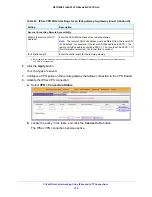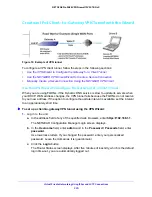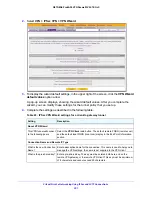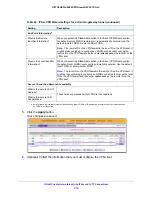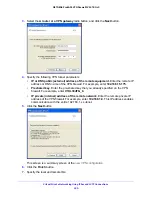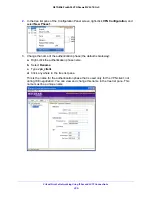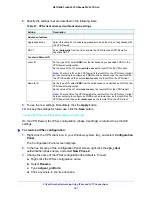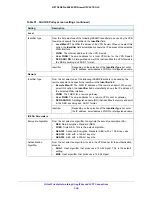
Virtual Private Networking Using IPSec and L2TP Connections
232
NETGEAR ProSAFE VPN Firewall FVS318G v2
This is the name for the IPSec configuration that is used only for the VPN client, not
during IPSec negotiation. You can view and change this name in the tree list pane. This
name must be a unique name.
4.
Specify the settings that are described in the following table.
Table 48. VPN client IPSec configuration settings
Setting
Description
VPN Client address
Either enter
0.0.0.0
as the IP address, or enter a virtual IP address that the VPN
client uses in the VPN firewall’s LAN; the computer (for which the VPN client
opened a tunnel) appears in the LAN with this IP address.
Address Type
Select
Subnet address
from the list. This selection defines which addresses the
VPN client can communicate with after the VPN tunnel is established.
Remote LAN address Enter
192.168.1.0
as the remote IP address (that is, LAN network address) of the
gateway that opens the VPN tunnel.
Subnet mask
Enter
255.255.255.0
as the remote subnet mask of the gateway that opens the VPN
tunnel.
ESP
Encryption
Select
3DES
as the encryption algorithm from the list.
Authentication
Select
SHA-1
as the authentication algorithm. from the list
Mode
Select
Tunnel
as the encapsulation mode from the list.
PFS and Group
Select the
PFS
check box, and select the
DH2 (1024)
key group.
Note:
On the VPN firewall, this key group is referred to as Diffie-Hellman Group 2
(1024 bit).


